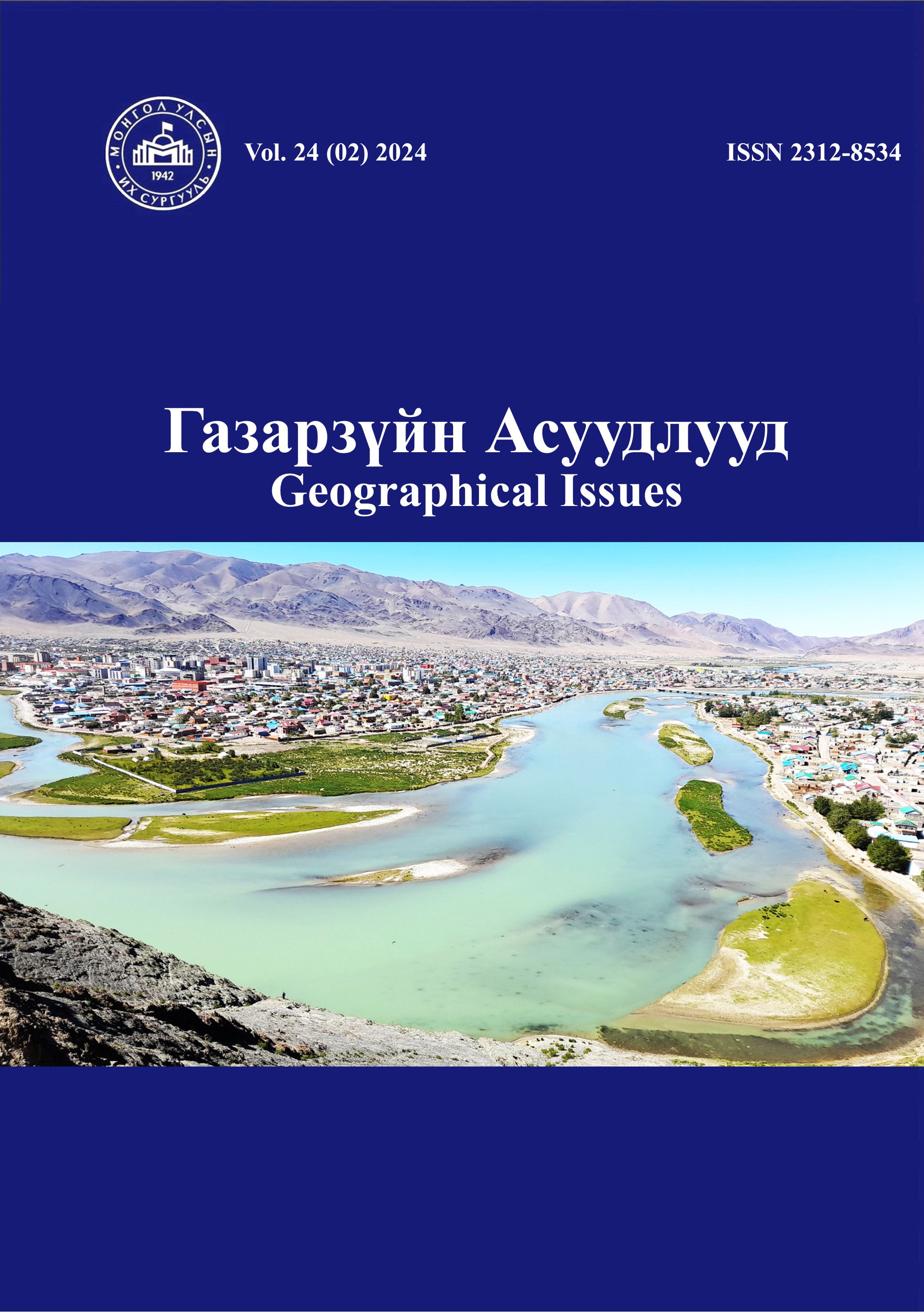Changes in the biomass of pasture plants and some impacts in Mongolia
Монгол орны бэлчээрийн ургамлын ургацын өөрчлөлт, түүнд нөлөөлөх зарим хүчин зүйлс
Keywords:
Pasture biomass, Drought, Air temperature, Precipitation, Statistical correlationAbstract
The biomass of pasture plants varies depending on general conditions such as climate, soil type, ecological zone, and hydrological network. Drought is defined as a condition in which the plants wither and stop growing because there is insufficient rainfall during the growing season, soil moisture decreases due to extreme heat, and the hydrological balance of the soil is disturbed. The amount of pasture biomass varies greatly depending on the drought conditions. According to our analysis, the correlation between pasture biomass and average air temperature during plant growth was 0.30 – -0.77, precipitation was -0.04–0.73, and the proportion of drought and semi–drought was 0.05–0.85. This shows that in 11 regions and 8 regions of the belt, the proportion of drought and semi-drought areas had a high correlation with yield, while in 2 regions, the air temperature and in 1 region, the precipitation were highly correlated in Mongolia. In a year with normal summer precipitation, the biomass of pasture plants is 2.3 q/ha in the high mountains, 6.2 q/ha in the forest-steppe, 4.8 q/ha in the steppe, 2.4 q/ha in the semi-desert steppe, and 1.5 q/ha in the desert. is 2.3 q/ha in the mountains, 6.2 q/ha in the forest-steppe, 4.8 q/ha in the steppe, 2.4 q/ha in the semi-desert steppe, and 1.5 q/ha in the desert. On the other hand, the biomass in a semi–drought decreases by an average of 0.9 q/ha in the high mountains, 2.4 q/ha in forest steppes, 1.8 q/ha in steppes, 0.9 q/ha in semi-desert steppes, and 0.6 q/ha in deserts. But in drought, the biomass decreases by 1.7 q/ha in high mountains, 4.5 q/ha in forest steppes, 3.8 q/ha in steppes, 1.8 q/ha in semi-desert steppes, and 1.1 q/ha in deserts
Downloads
Downloads
Published
How to Cite
Issue
Section
License

This work is licensed under a Creative Commons Attribution-NonCommercial-ShareAlike 4.0 International License.






